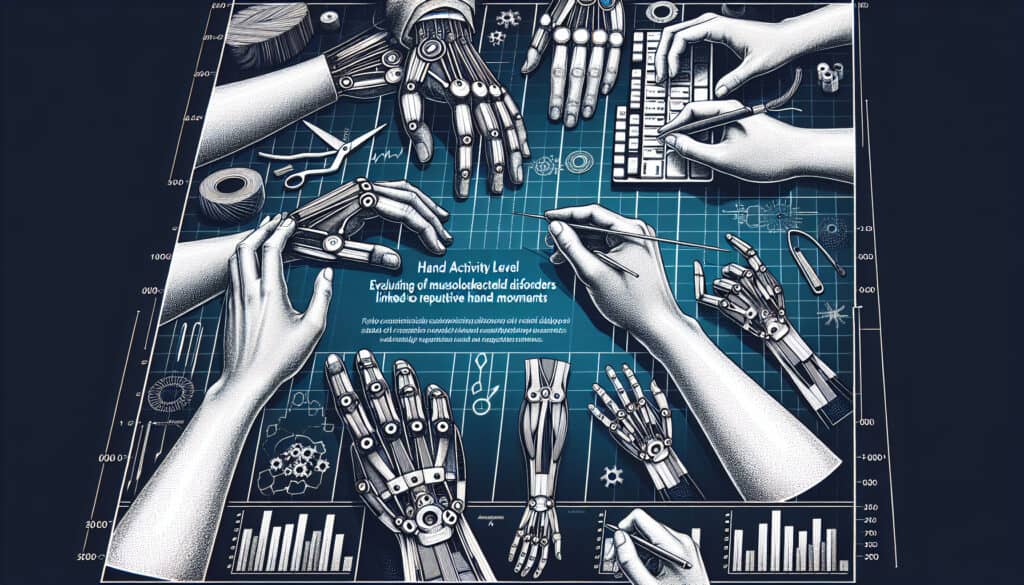To assess the risk of musculoskeletal disorders associated with repetitive hand work.
- 方法: 客户与营销, 经济学, 产品设计
HAL(手部活动水平)

HAL(手部活动水平)
- 持续改进, 人体工程学, 人为因素, 人因工程(HFE), 精益制造, 流程改进, 质量管理, 风险管理, 安全
目标
如何使用
- A rating scale that combines the frequency of hand exertions and the duty cycle to assess the level of hand activity in a job. It is used to identify jobs with a high risk of hand and wrist injuries.
优点
- Provides a quantitative measure of hand activity; Helps to identify high-risk jobs.
缺点
- Can be subjective and difficult to rate accurately; Does not account for all risk factors.
类别
- 人体工程学, 风险管理
最适合:
- Assessing the ergonomic risk of a manufacturing or assembly line job.
The Hand Activity Level (HAL) methodology is often utilized during the design phase of products and manufacturing processes where the risk of repetitive strain injuries is high, specifically in industries such as automotive, electronics, and consumer goods manufacturing. In these sectors, assessing ergonomic risks is paramount for compliance with labor regulations and enhancing worker safety and productivity. The HAL rating employs a systematic approach to quantifying the intensity of hand actions, combining the frequency of hand movements with the duty cycle to generate a comprehensive assessment of hand activity throughout various tasks. This quantitative measure allows design engineers and ergonomists to identify specific jobs that exceed recommended thresholds, channeling efforts towards ergonomically sound solutions like redesigning workstations, introducing assistive tools, or implementing job rotation to mitigate risks. It is typically initiated by ergonomists or health and safety professionals collaborating with design teams, operation managers, and workers themselves, ensuring an inclusive approach that incorporates feedback from those directly affected. Additionally, the methodology facilitates benchmarking across similar job functions and environments, helping organizations set challenges for continuous improvement in workplace ergonomics. Data generated from HAL assessments may also serve as evidence for business cases related to healthcare cost reductions, workforce optimization, and enhanced employee well-being, contributing to an organization’s sustainability goals.
该方法的关键步骤
- Determine the frequency of hand exertions during the job cycle.
- Assess the duty cycle by calculating the percentage of time hands are actively engaged.
- Multiply the frequency of exertions by the duty cycle to derive the HAL rating.
- Interpret the HAL rating in relation to established ergonomic risk thresholds.
- Identify specific tasks within the job that contribute to elevated HAL ratings.
- Recommend ergonomic interventions based on the analyzed HAL ratings.
专业提示
- Integrate real-time monitoring tools with HAL analysis to capture immediate data on hand activity, allowing for dynamic adjustments in job design.
- Combine HAL ratings with qualitative assessments from workers about their experiences to identify contextual factors that may elevate risk beyond numerical data.
- Utilize historical HAL data across similar tasks to benchmark and predict potential risks in new job designs, facilitating proactive ergonomics improvements.
历史背景
1986
(如果日期不详或不相关,例如 "流体力学",则对其显著出现的时间作了四舍五入的估计)。

相关文章
主生产计划(MPS)
大规模定制
营销漏斗
营销审计
MAPO 指数(医院病人的移动和援助)
制造资源计划(MRP II)